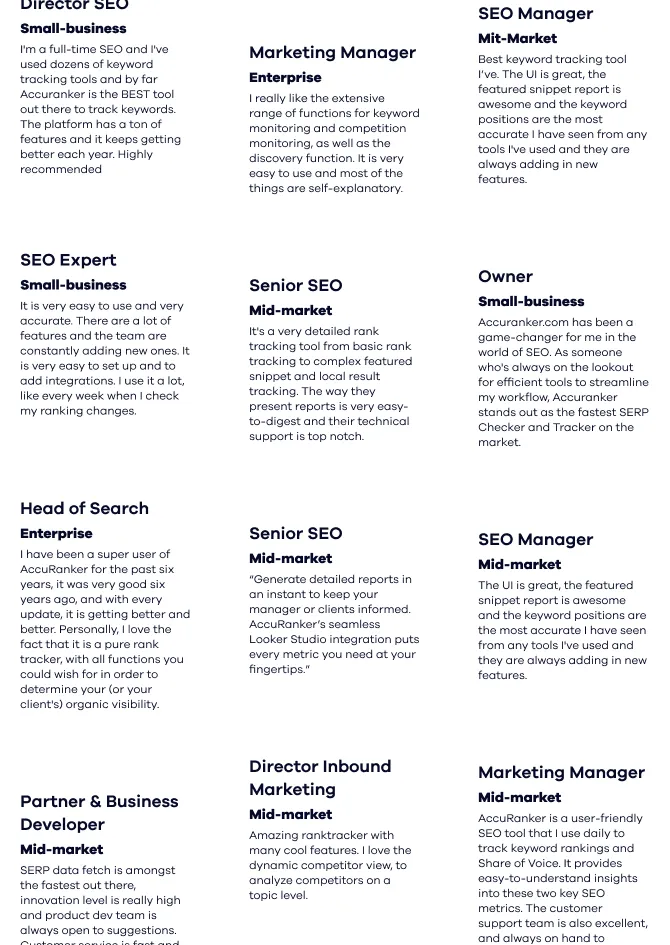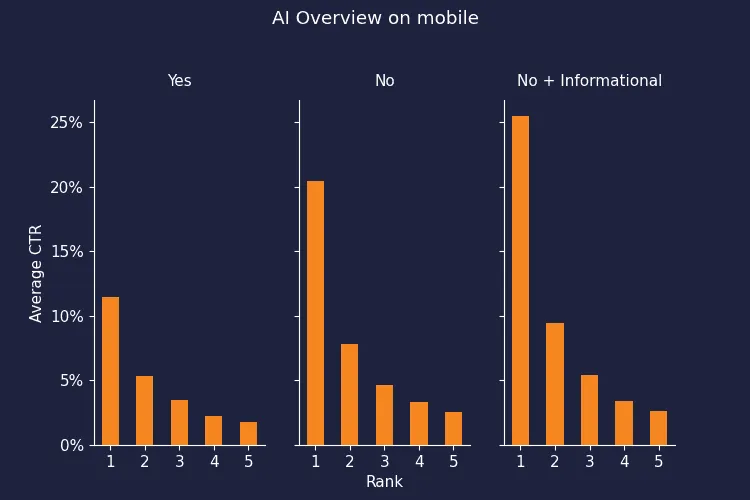
CTR model update January 2025

Peter Emil Tybirk
January 22, 2025
Learn more about AccuRankers AI CTR model update in January 2025
On January 14, 2025, we released a major update to our AI CTR model. A lot has happened in the SERP landscape since our latest big update!
For most of our clients, this update means they will have seen a drop in their AI Share of Voice and AI CTR metrics. On the charts in AccuRanker, it looks like a drop that happens from one day to the next, but in reality it reflects what has happened to the SERPs over the last few years.
The new CTR model is a better reflection of reality. But if you rely primarily on this metric to track progress, the sudden drop in AI Share of Voice can be frustrating. In this case, one option is to use our "regular" Share of Voice model, which is based on a static CTR model that is not affected by our AI CTR model. In the future, we aim to make less drastic model updates, but likely more frequent ones, to adapt to the ever-changing SERP landscape.
In this article, we'll dive into some of the changes that have impacted our CTR model, and by extension, AI Share of Voice.
New SERP features
Over the past few years, the SERPs in general have changed a lot. We see more images, ads and shopping related features and less space taken up by "regular blue links" than before. These other SERP features that take up space "steal" traffic from organic results, which is one of the major factors in the CTR drop we have seen.
Another prominent new feature is AI Overview. On SERPs with AI Overview, we see a big difference in CTR. Compared to SERPs without it, rank 1 receives almost half the clicks, and when compared to SERPs with Informational search intent, it is even more striking.
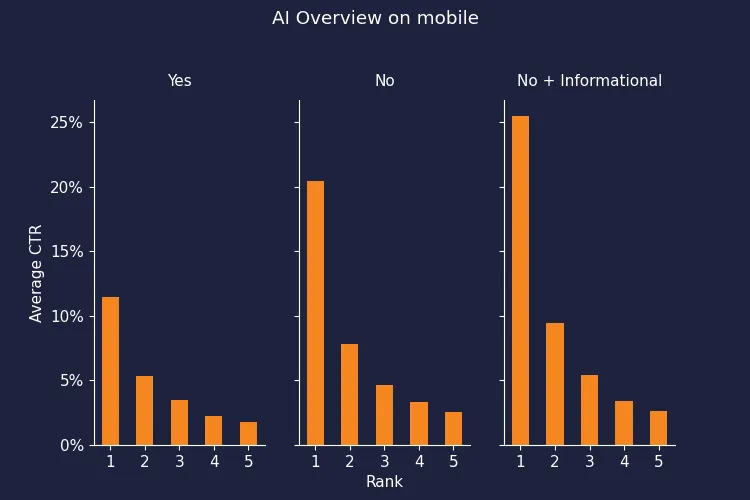
More ads detected
AccuRanker is now detecting more ads than in the previous half year. This naturally affects the CTR we report. While this results in a decrease in the reported CTR in AccuRanker, it gives a much more realistic picture of the traffic your organic results are receiving compared to ads. So when you compare your current CTR with a CTR from a previous period, it is interesting to see which SERP features have changed as well as the rank and pixel position. You can use the SERP Analysis tab for this part of the analysis.
More bot traffic?
By analyzing billions of rows of Google Search Console data, we have found that CTRs in general have dropped significantly over the past few years, and the number of searches with no clicks have similarly increased. AccuRankers AI CTR model is based on Google Search Console data, so it is naturally reflected in our model. One reason is that the SERP is simply different than it used to be, with more traffic going to non-organic results. But there could also be something else at play.
One theory we have, which is hard to verify, is that impressions in Google Search Console have become inflated by bot traffic. Bot searches would in general increase impressions without increasing clicks, thus lowering CTR. Whether some of the many Google scraping tools (it could be rank trackers, LLM data scrapers, or other tools that harvest Google data) bypass the bot detection in Google Search Console is an open question, but it could be part of the explanation for the trend we see with declining CTRs.
We will be releasing a whitepaper in the coming months that dives deeper into the details of the model, so stay tuned.
Related blog posts
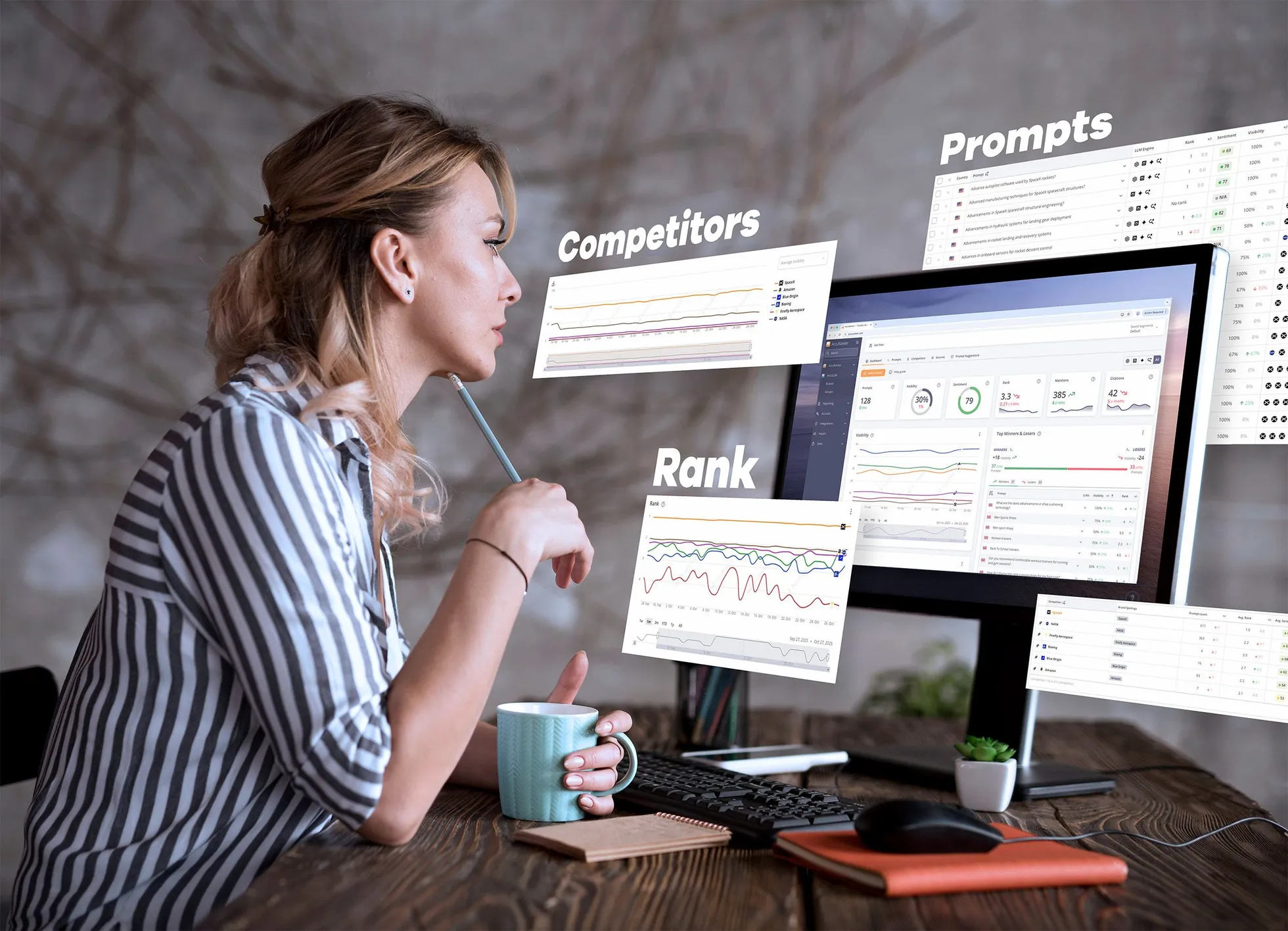
Track Your LLM Performance with AccuLLM
You can now track ChatGPT, Perplexity, AI Overview, and AI mode with AccuLLM. Learn how we help you monitor your LLM performance.
20 October 2025Google Num 100 Update
19 September 2025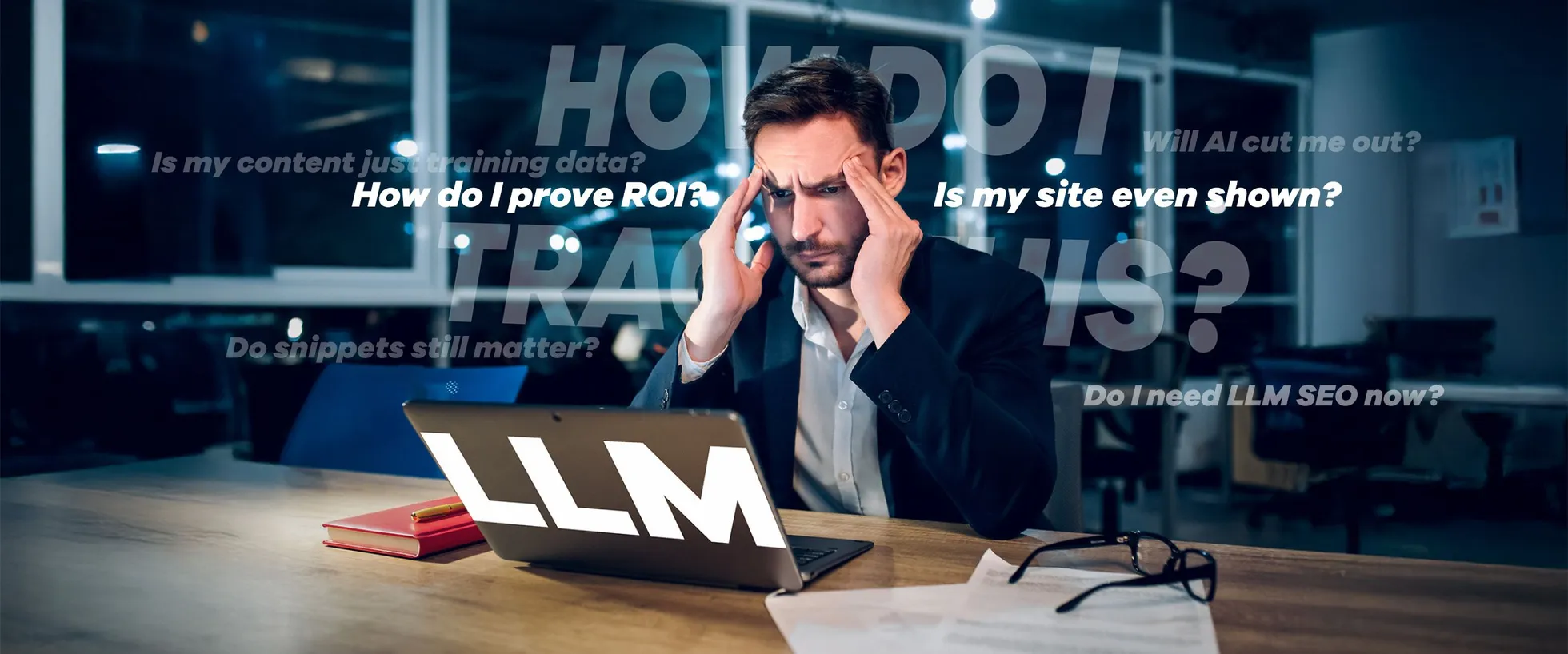
How LLMs Change Traditional SEO Metrics
Learn why rankings, CTRs, and impressions fail to measure visibility in AI-powered search — and what SEOs should track instead.
15 July 2025



